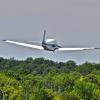Mid air today. AKA suicidal bird
-
Members Online
- Stan
- mooney17n
- ArtVandelay
- mat_williams
- NickG
- eman1200
- donkaye
- MikeOH
- ericrynehess
- exM20K
- Bob Weber
- Chaseford10
- dzeleski
- Scottknoll
- 00-Negative
- Todd1
- Bartman
- Raistlin
- kortopates
- KLRDMD
- Larry
- BrentS
- Echo
- 201Mooniac
- 30X
- GeeBee
- cliffy
- TCC
- Wingover
- PeteMc
- BobbyH
- RGDantas
- Stealth Mooney
- cruiserflyer
- EricJ
- charlesual
- PMcClure
- ohdub


Recommended Posts
Join the conversation
You can post now and register later. If you have an account, sign in now to post with your account.